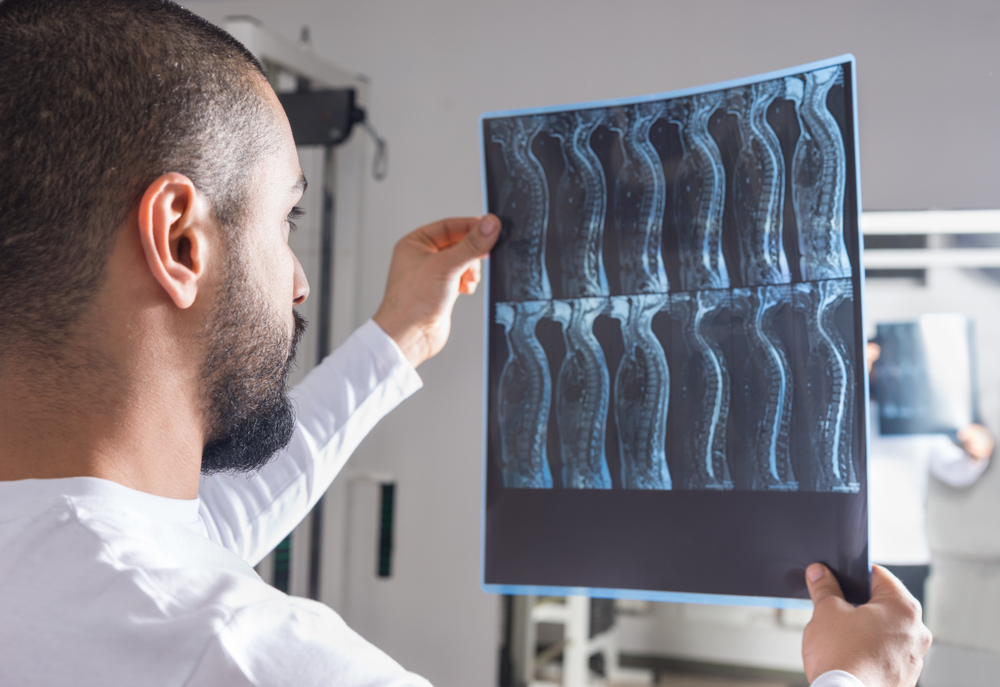Spinal Cord Stimulation: How it Works
PUBLISHED ON:
September 17, 2019
Spinal cord stimulation therapy is a pain treatment that masks the pain signals before they reach the brain. A device similar to a heart pacemaker is implanted in the body and delivers electrical pulses to the spinal cord. This procedure is an option for patients who suffer from chronic pain, leg, or arm pain.

What is Spinal Cord Stimulation?
A spinal cord stimulator (SCS) is a small device that is placed under the skin and transmits a mild, low-frequency electric current to the spinal cord. A tiny wire transfers an electrical pulse to the nerve fibers and theSCS minimizes pain by hiding the pain signals and preventing them from reaching the brain.
It is important to note that spinal cord stimulation therapy does not completely get rid of the pain it simply runs interference with the signals to the brain. This means that pain relief can vary depending on the patient.
Before a permanent spinal cord stimulator is implanted, each patient undergoes a trial to make sure this type of therapy will be effective and reduce their pain. The goal of spinal cord stimulation is not to completely erase pain, but to provide a 50-70% reduction in pain. Even the slightest bit of pain relief can be helpful to someone who suffers regularly.
Why is SCS Used?
Spinal cord stimulation is used to treat neuropathic pain that originates from nerve damage and is used to avoid patients from undergoing more invasive back surgeries. Patients who are prime candidate for this type of treatment have nerve damage caused by injury, accident, or trauma. Other leading causes for receiving SCS therapy is complex regional pain syndrome and peripheral neuropathic pain. Nerve pain that spans beyond damage to the brain and spinal cord, such as from an infection or even amputation or diabetes.
This type of therapy is more effective when utilized in the earlier stages of a chronic disease or conditions, rather than later when a disability has been established.
SCS therapy is used to reduce these types of pain:
- Failed Back Surgery Syndrome: When initial surgery (or surgeries) have been ineffective in reducing pain on a consistent basis.
- Sciatica or Arm Pain: Persistent pain caused by arthritis, spinal stenosis, or extensive nerve damage.
- Complex Regional Pain Syndrome: When patients experience a severe chronic pain, typically in their hands or feet.
- Arachnoiditis: This is painful inflammation and scarring of the protective lining of spinal nerves
Other types of pain caused by stump pain, peripheral vascular disease, multiple sclerosis, or a spinal cord injury may be reduced by the use of a spinal cord stimulator.
More recently, SCS therapy has been proven to treat a number of chronic visceral pain types, such as abdominal or pelvic pain.
Benefits of Spinal Cord Stimulation
SCS therapy helps the body restore pain-inhibition pathways that have been lost. Pain-inhibitory pathways essentially work as a gate-keeper. They control how much pain is received by the brain. SCS therapy harnesses the body’s natural pain-relieving chemicals that are used by nerve fibers to communicate with each other. Not only does this whole process reduce pain, but it increases microcirculation.
. For many patients who suffer with chronic pain, even the smallest amount of pain relief is welcomed. This has a profound effect on improving the quality of life in patients who have suffered from long-term chronic pain.
There are no pre-existing medical conditions that would prevent someone from receiving this type of therapy. If you have pain that is caused by a correctable problem (meaning it could be fixed by having surgery or other interventional treatments), SCS is a viable option for reducing your pain.
PUBLISHED ON:
September 17, 2019


